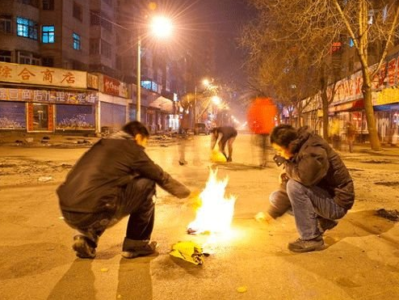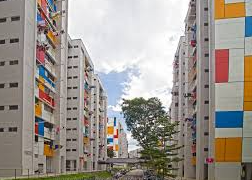Navigating the intersection of cultural rituals and environmental health in Singapore’s unique landscape.
After the influential figures wrap up discussions at events like COP26, do topics such as gas streetlights or ceremonial burning surface during casual conversations? While the answer remains elusive, it’s clear that billions globally interact with environmental policies that often overlook these cultural practices. This article focuses specifically on ceremonial burning, especially relevant following the Qingming Festival celebrated on April 5.
Qingming, known as Tomb-Sweeping Day, is a significant observance in Chinese culture where families visit the graves of their ancestors. During these visits, graves are tidied up, offerings—typically made of joss paper—are burned, and families spend quality time together. The act of burning symbolizes the transfer of material goods to the spirits, allowing them to receive the essentials in the afterlife.
For instance, fake paper money is incinerated to ensure that ancestors have currency in their next life, while other items like paper representations of cars and houses may also be burned as offerings. This longstanding practice, which can be traced back over 2,000 years, is not limited to the Qingming Festival; many Asian cultures incorporate similar rituals in various contexts.
In Singapore, the scarcity of land has led to the adaptation of these traditional practices. Graves are frequently exhumed after a designated time to make way for new burials or urban development. This situation has led families to honor their ancestors using ancestral tablets in columbaria or at home, resulting in Qingming offerings being burned in residential areas instead of cemeteries.
Another related event, the Hungry Ghosts Festival, also involves extensive burning rituals. During this festival, it is believed that spirits temporarily return to the living world, and paper offerings are burned to ensure their comfort during their stay. This pattern of burning continues across various holidays, including Buddhist and Taoist ceremonies, illustrating the intertwined nature of these traditions.
However, the environmental impact of such practices has raised significant concerns. While the National Environment Agency acknowledges the religious significance of burning joss paper, it also advocates for safe burning methods. The increase in pollution during festivals like the Hungry Ghosts Festival has prompted discussions about potential regulations, similar to those already implemented in countries like China and Taiwan.
The Tay Guan Heng Joss Stick Maker shop serves as a poignant reminder of the balance between tradition and modern regulations. The Tay brothers, custodians of the art of giant joss stick making, are navigating the challenges posed by contemporary restrictions. While they continue to produce intricately designed joss sticks, the limitations imposed on size have significantly reduced demand, illustrating the broader impact of changing regulations on traditional crafts.
Ultimately, the interaction between cultural practices and public health concerns requires careful consideration. As traditions face scrutiny in the context of modern environmental policies, the challenge lies in preserving cultural heritage while addressing health and environmental needs. Conversations surrounding these issues reveal a complex tapestry of beliefs and practices, underscoring the importance of finding harmony between tradition and contemporary challenges.








